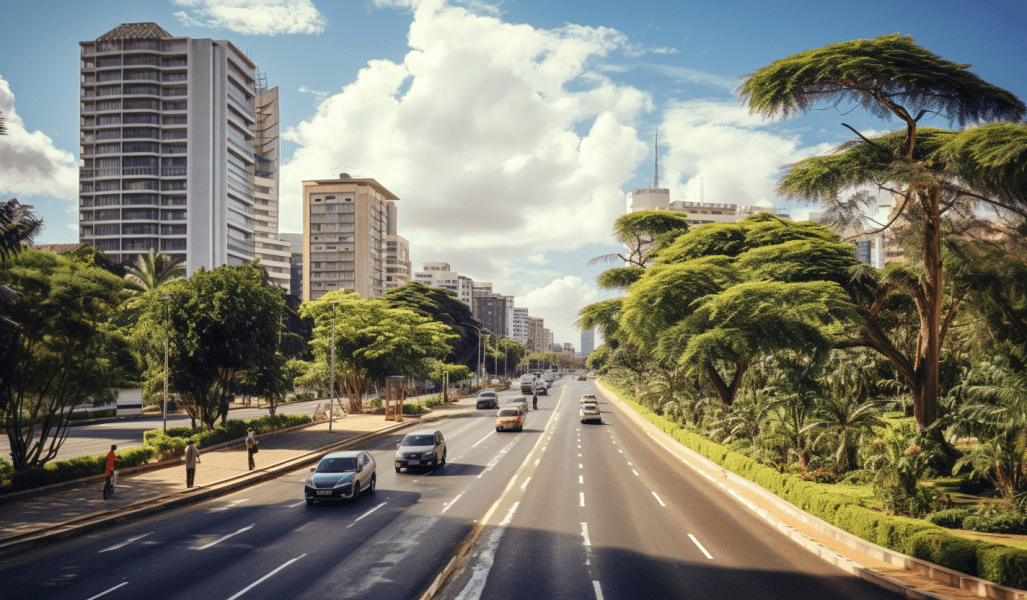Kisumu City, often affectionately referred to as “Dala” by locals, is undergoing a remarkable transformation, setting itself apart as a rapidly growing metropolis with a fresh identity.
Recent developments have breathed new life into this Kenyan city, making it cleaner, more organized, and pedestrian-friendly, ultimately enhancing the quality of life for its residents.
Under the visionary leadership of Kisumu Governor Anyang Nyong’o, the city is on a path to becoming a smart city, embracing the principles of good infrastructure, internet connectivity, public safety, energy efficiency, healthier communities, and a clean and efficient transport system.
Table of Contents
KISUD: Paving the Way for a Smart City
Governor Nyong’o initiated the Kisumu Integrated Strategic Urban Development (KISUD) plan, aligning with objectives set in 2015. Complementing this plan are the Kisumu Sustainable Mobility Plan (KSUMP), a 10-year transport strategy, and the Kisumu Local Physical and Land Use Development Plan (KLPUDP), a comprehensive land use plan with zoning standards and infrastructure proposals.
These initiatives have already begun to reshape Kisumu, attracting increased interest from investors in vital sectors such as real estate, tourism, hospitality, and fishing.
Governor Nyong’o shared, “It’s these developments that we saw it good to start transforming Kisumu into a smart city that is friendly to everyone including pedestrians, investors, business owners, public service vehicle, bicycle, motorbike, Tuktuks operators, to the environment and other stakeholders.“
Nine Growth Nodes for Progress
The city has identified nine growth nodes, including Nyamasaria, Kondele, Chiga, Kibos, Rabuor, Kisian, Dunga, Riat, and Otongo, where development plans are focused.
The first phase of this ambitious transformation, completed in May last year, involved identifying and labeling 22,000 buildings. These services have been extended to neighboring areas such as Mbale, Majengo, Luanda, and Mudete.
Prioritizing Safety and Efficiency
To create a safe, calm, clean, and orderly city, the KSUMP was developed in collaboration with partners like the Institute for Transport and Development, UN-Habitat, Ford Foundation, and the International Climate Initiative. The plan’s vision is to promote equity and sustainability in mobility by prioritizing walking, cycling, and efficient transportation.
The city is already implementing key recommendations from the plan, including the development of non-motorized transport (NMT) infrastructure, enhancing road safety in school zones, creating a continuous pedestrian realm on 100 kilometers of streets, and constructing 31 kilometers of cycle tracks.
Additionally, a bike-share system with 400 cycles and a 3.7-kilometer lakefront greenway are in the works.
‘‘We are progressing well in our quest for a smart city. So far, we have managed to do Lot 1 of cordoning off Jaramogi Oginga Odinga Triangle, the streets surrounding Oginga Odinga Sport, till to Nyerere Road and extending Omollo Agar Road by putting away PSVs especially matatus out of the CBD, and only allowed motorcycles and bicycles,’’ said Abala Wanga, the Kisumu City manager in charge of implementing the plans.
Modernizing Public Transport
As part of the city’s commitment to reform public transport, it is in negotiations to digitize PSV matatus and Tuktuks to enhance the current business model.
Taking inspiration from Kigali City, designated bodaboda drop-off and pick-up sheds will be introduced through an online system in the CBD. Tuktuks will be limited to carrying luggage, contributing to an organized transport sector.
Towards a Greener Future
Kisumu is also taking steps towards environmental sustainability. Plans include transitioning from Tuktuks and 14-seater matatus to a 50 to 75-seater electric bus trunk way system with bus lanes both within and outside the CBD. The city is in discussions with private operators to introduce electric buses, significantly reducing carbon dioxide emissions.
READ ALSO: Insights from the Africa Climate Summit
Illuminating the City
Walking safely in the city at night has become a reality thanks to the installation of nearly 1,000 street lights and well-lit walkways with floodlights in residential areas, despite some vandalism challenges.
Managing Waste and Reclaiming Green Spaces
The county government has made significant strides in waste management, licensing most waste collectors and relocating the Kachok dumpsite to Kasese for proper isolation and segregation.
Additionally, several parks within the city, including Oile, have been reclaimed and renovated, transforming them into recreational spaces.
Global Learning and Collaboration
Kisumu’s journey towards becoming a smart city has garnered support from various development partners. City officials have embarked on learning trips to cities like St. Petersburg in Russia, Addis Ababa, and Kigali to gain insights and technical support.
These trips have inspired improvements in areas such as greening the city, transport organization, and park design.
In May last year, Kisumu City hosted the 9th Africities Summit at Jomo Kenyatta Stadium, showcasing its transformation efforts on a global stage.
With its commitment to sustainable development, urban rejuvenation, and improved quality of life for its residents, Kisumu is carving a unique path towards becoming a modern and forward-thinking city.



